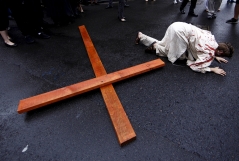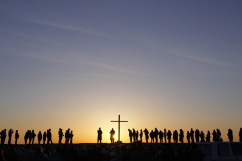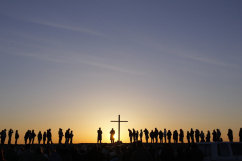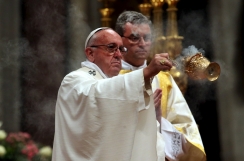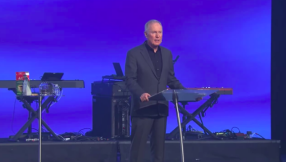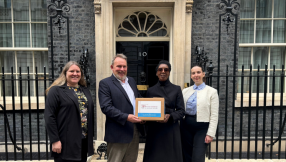
The best bit of any research project is the face to face interviews.
To sit in someone's kitchen or office for a couple of hours and to hear their stories, first hand, is a privilege and always, always interesting. You often hear immensely personal recollections of not only what they have done, but how it felt to be there. Stories can often be surprising too. You hear the tale of the 'big story' unfolding, but it always contains lots of little stories, anecdotes and recollections – sometimes told for the first time.
This project was no exception. We were aiming to asses the effectiveness of so-called 'church planting' – the process whereby an existing church whose congregation is small, receives a new lease of life from a bigger church – in the form of a group of people being 'sent' to the smaller church.
This is the first full and independent impact assessment of Holy Trinity, Brompton's (HTB) church planting in east London over the last 10 years and involved hearing a lot of interesting and sometimes moving stories. Five churches in Tower Hamlets since 2005 have benefited from planting or partnership initiatives.
There are three kinds of story.
Some of the most vivid pictures painted for me were those from older members of the congregations who have lived in the area for decades. They have stuck with their local church through thick and thin over the years. They have sat amongst dwindling congregations and heard the rumours of closure, but have refused to give up. They were convinced that their local church mattered – that a local presence in this place at this time was important. They have prayed for revival. These are stories of love.

The stories I was told by the church planters and church leaders were often 'stories of sweat'. Moving to a new area, re-building a church community, negotiating change – none of these things were easy. Often the leaders were doing things for the first time themselves. The re-birth and growth of these churches and their congregations was not inevitable – it had to be grasped with both hands and wrestled with. There were often setbacks and disappointments. (We have tried to draw on these to identify lessons for others in the report.)
I also heard stories of changed lives. Of people finding faith for the first time, making new friends, achieving things they never thought possible. Sometimes, people really do walk into a church off the street and want to know more. Sometimes they bump into the vicar or the youth worker in the newsagent or the pub and find themselves chatting. Sometimes change happens when people get involved with the local foodbank or youth club or work together to run a winter shelter for the homeless. These are the stories of tears – of the broken hearted and those who allow their hearts to be broken by others.
Our report draws on robust evidence from interviews, financial and church attendance data and some major congregational surveys to tell the story of how five churches have been re-born or re-energised.
A number of these churches were on the verge of closure. Now, all of them are thriving. Each church is very different but between them, typical church attendance has grown tenfold over the last decade to nearly 750 people – around one in five of these is a new believer or returning to church for the first time in many years. Their finances are radically improved, their congregations are highly engaged and their communities benefit from social projects and volunteering as they seek to serve their neighbours.
These churches are a living testament to the benefits of a local church in every community. They are an encouragement to the rest of us that such a possibility is perhaps not beyond our grasp. Tales of the Church's demise are exaggerated. There is hope to be found in the most unlikely places. It just takes some love, sweat and tears.
Tim Thorlby is the Development Director of the Centre for Theology & Community and author of Love, Sweat and Tears: Church Planting in east London...










